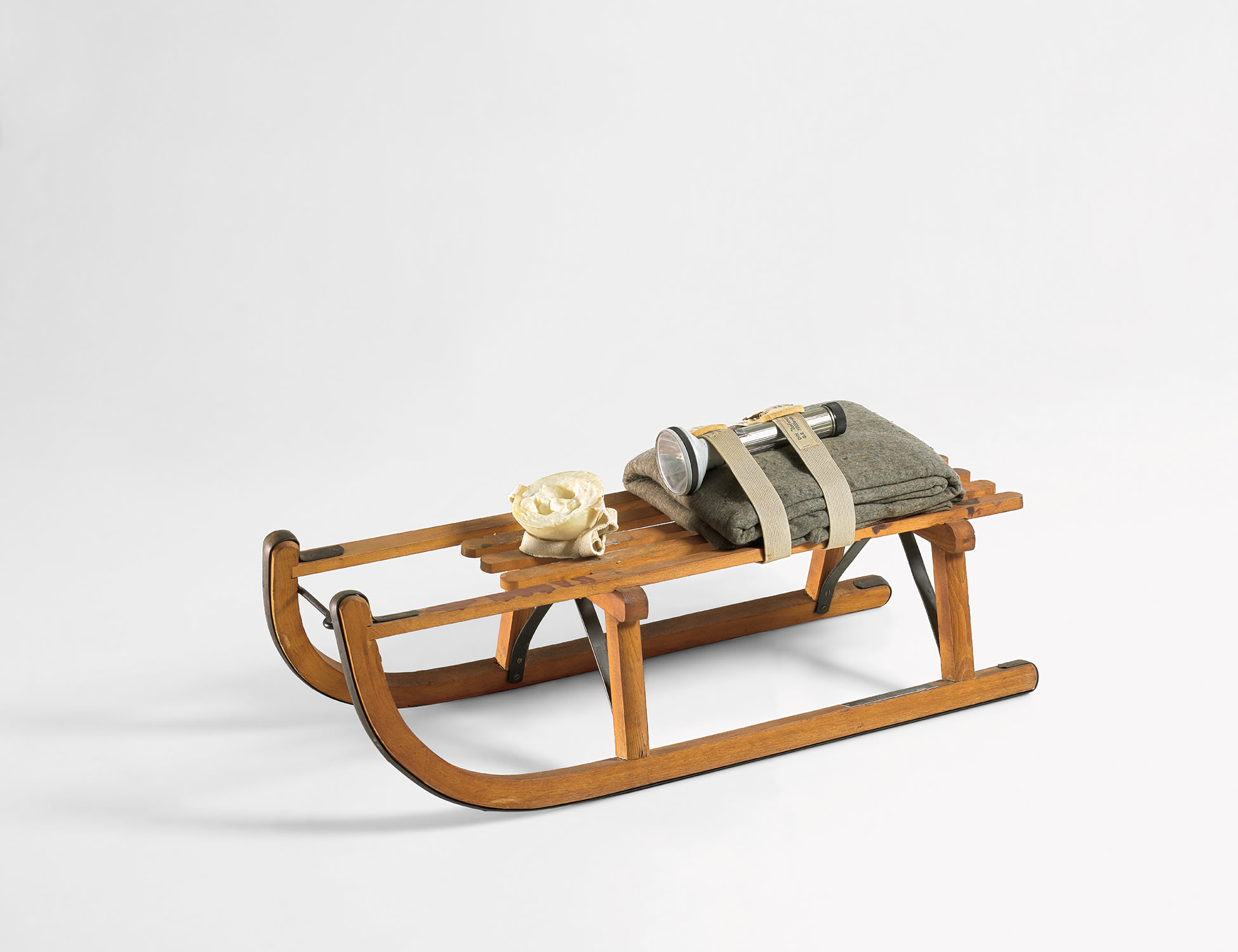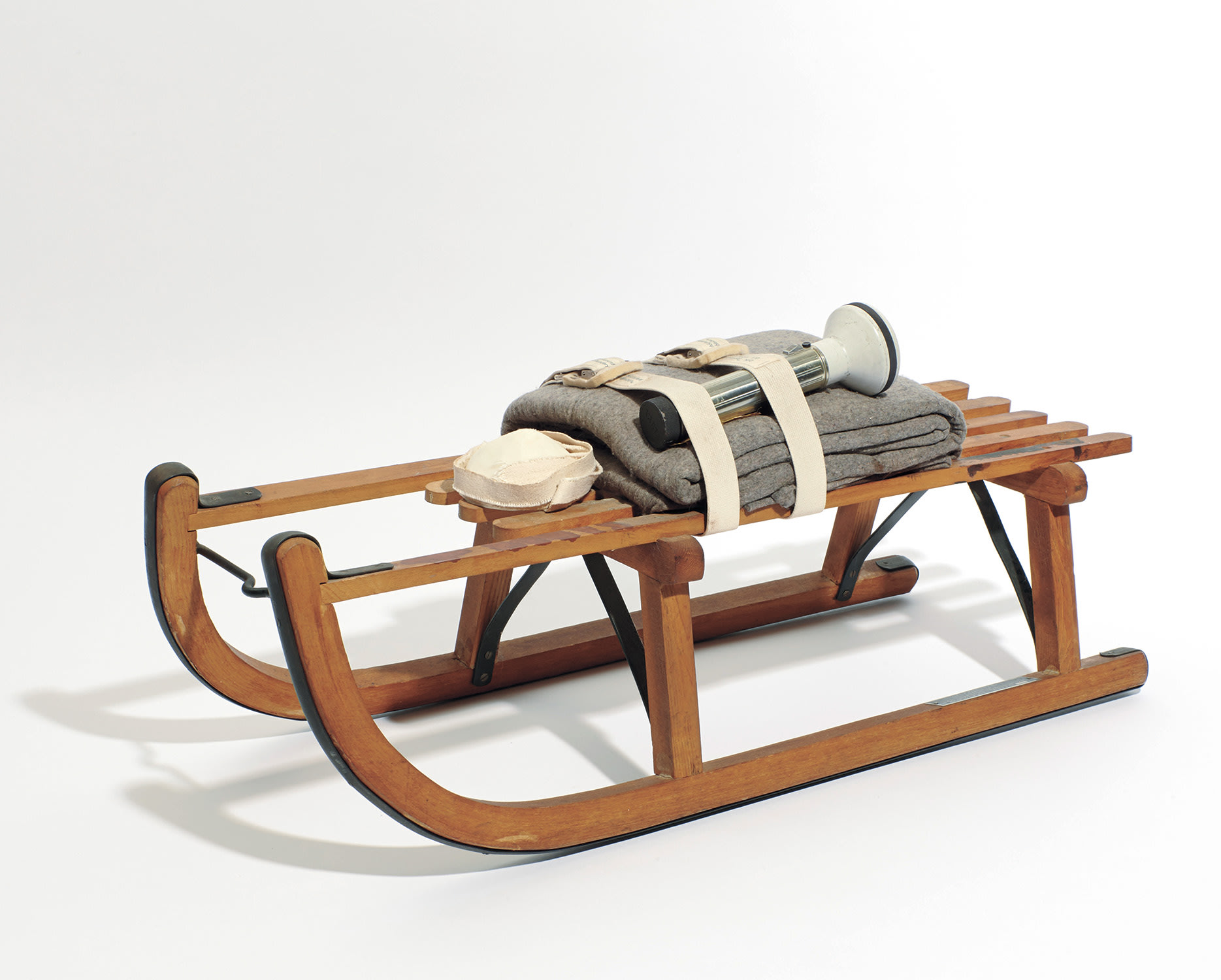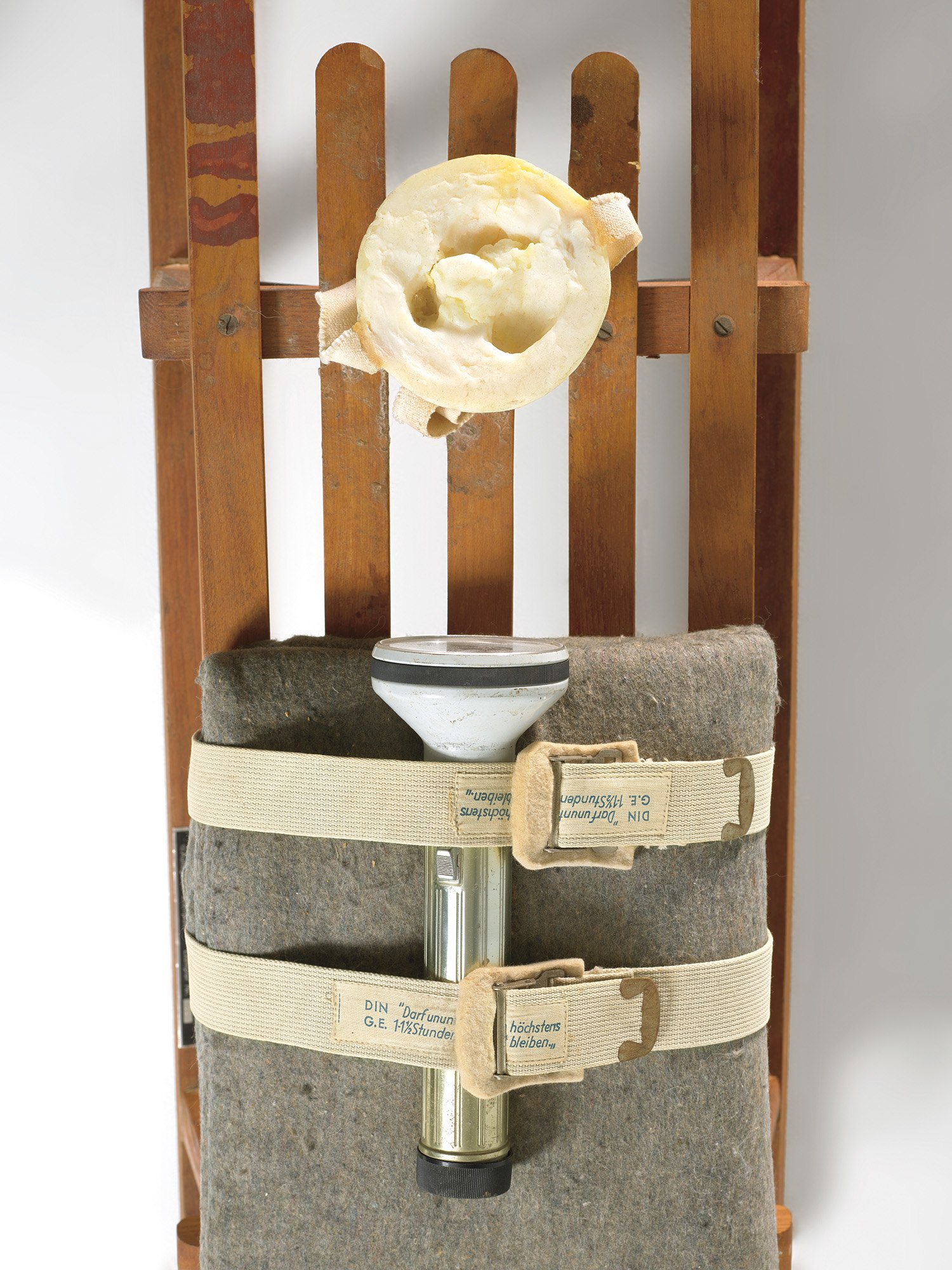







Property from an Important American Collection
15
Joseph Beuys
Schlitten (Sled) (S. 12)
1969
Wooden sled, felt, belts, flashlight, fat, and oil paint (Browncross).
91.4 x 43.2 x 34.3 cm (36 x 17 x 13 1/2 in.)
Stamp-numbered '04' on a plaque affixed to the sled, from the edition of 50 (there were also 5 hors commerce copies), published by Galerie René Block, Berlin.